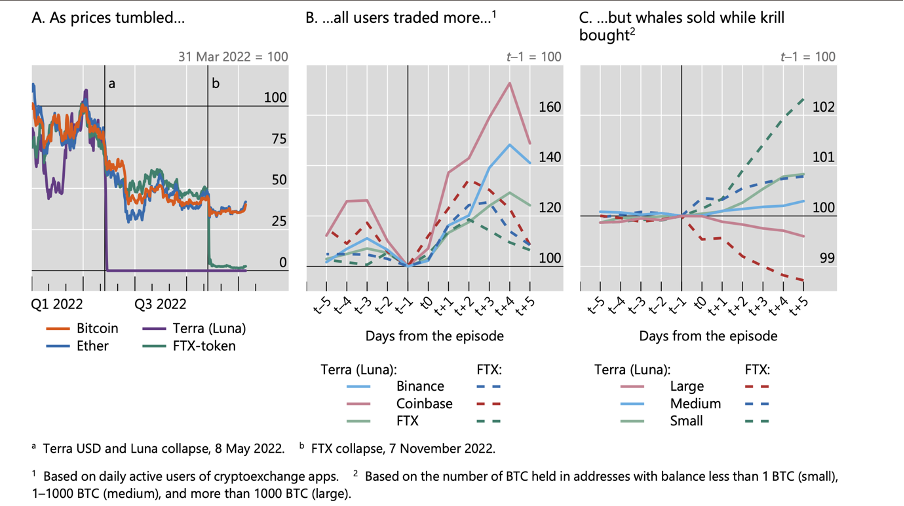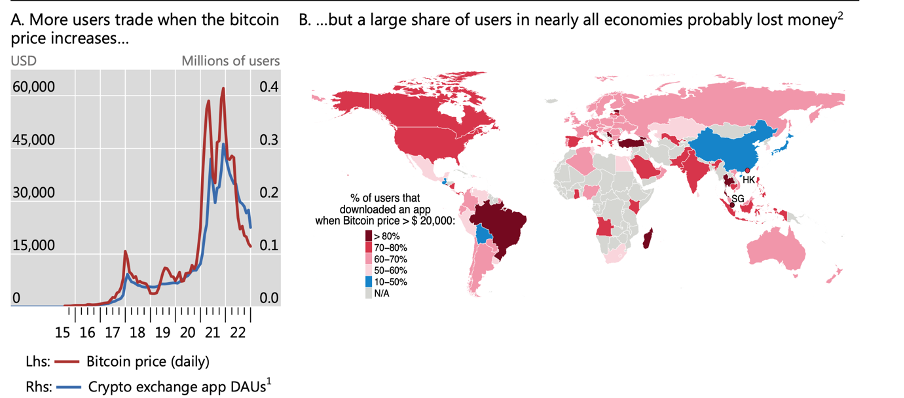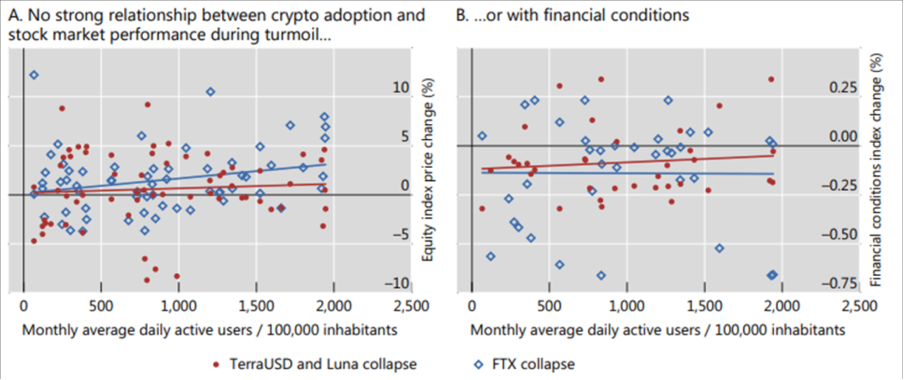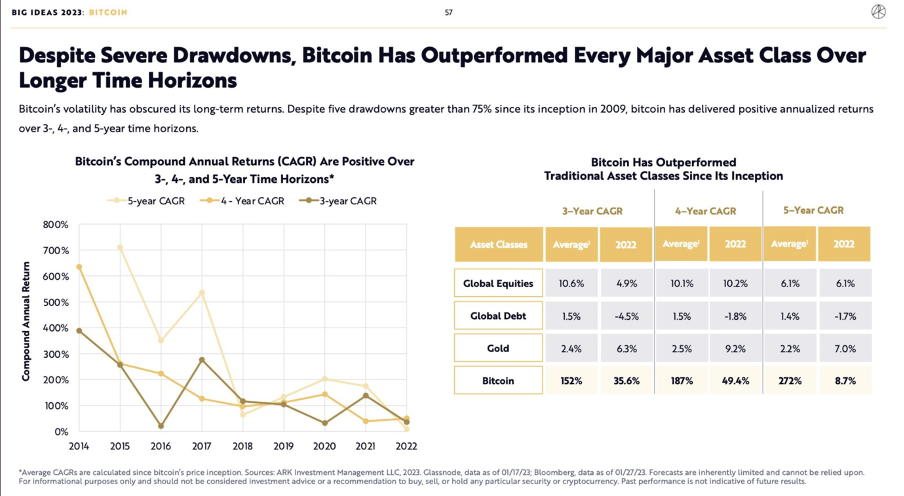Crypto retail investors have lost crypto money over the years. The volatile nature of cryptocurrencies and the lack of regulation in the crypto market have led to many instances where investors have lost large amounts of money. Per the BIS report, retail crypto price-chasing loses money.
The past few years have seen a surge in the popularity of cryptocurrencies, with Bitcoin leading the pack. As the prices of cryptocurrencies skyrocketed, many retail investors jumped onto the bandwagon, hoping to make a quick profit. However, for many investors, their journey into the world of cryptocurrencies was painful, with most losing money.
One of the main reasons retail investors have lost money is the highly volatile nature of cryptocurrencies. The prices of cryptocurrencies can fluctuate rapidly, sometimes by as much as 10-20% in a single day. This makes it extremely difficult for retail investors to predict price movements accurately, leading to poor investment decisions.
SponsoredWhy Do Retail Crypto Investors Suffer Losses?
The price of Bitcoin reached an all-time high of nearly $65,000 in April 2021 but dropped to around $30,000 in June 2021. Currently, BTC is trading below the $24,000 mark, down by more than 65% from its all-time high. Retail buyers, who are individual investors with smaller amounts of capital, are typically more exposed to market volatility and may be more likely to experience losses.
Another reason for the losses experienced by retail investors is the need for knowledge and understanding of cryptocurrencies’ underlying technology and market dynamics. Retail investors need proper due diligence and research to enter the market, making poor investment decisions based on hype and speculation. Moreover, the need for more regulation and oversight in the cryptocurrency market has also contributed to the losses experienced by retail investors.
Unlike traditional financial markets, cryptocurrency is largely unregulated, leaving investors vulnerable to fraudulent activities and market manipulations.
Lastly, the herd mentality of retail investors has also played a significant role in their losses. Many investors entered the market when cryptocurrencies peaked, driven by the fear of missing out on potential profits. Even following buying sprees from whales or professional traders with deep pockets. However, when prices plummeted, many retail investors panicked, exacerbating their losses.
Whales Eat All the Profits in Adverse Market Conditions
The Bank of International Settlement released a report on Feb. 20 incorporating the discussed scenarios for retail investors. This is evident from last year, when the market lost billions of dollars, significantly affecting retailers. Over $450 billion exited during the market turmoil following the Terra (LUNA) collapse in May 2022 alone. Another $200 billion was lost after the FTX bankruptcy in Nov. 2022.
Within the discussed period, ‘crypto trading activity increased markedly, with large and sophisticated investors selling and smaller retail investors buying,’ the report added. This is evident in the graphs added below.

The BIS notes that despite Terra’s crash and FTX’s fall, activity on crypto trading apps jumped after news broke of their failures—but more oversized holders typically were able to “at the expense of smaller investors” as they know when to sell Bitcoin and other cryptos to retail investors before a sharp decline.
Sponsored Sponsored“These losses could be exacerbated by the fact that larger, more sophisticated investors tended to sell their coins right before steep price declines, while smaller investors were still buying,” the report says.
Retail Crypto Price-Chasing Method Loses Money
A fresh set of retail investors jumped on the crypto wagon, lured by good profit margins. The graph below gives support to the mentioned statement. On-chain data, exchange metrics, and cryptocurrency application download statistics gathered by BIS researchers suggest that most median retail crypto investors lost money from August 2015 to the end of 2022.

The report asserted:
“Data on major crypto trading platforms over August 2015–December 2022 show that, as a result, a majority of crypto app users in nearly all economies made losses on their bitcoin holdings.”
Many BTC holders/investors lost money across different geographical areas. Not so surprisingly, the losses were higher in various emerging economies such as India, Turkey, Brazil, and more. But here’s the part that created a stir within the crypto market: Per the BIS study, the devastations triggered by the collapse of renowned crypto institutions had no severe impact on the broader financial market. BIS researchers insisted that “crypto crashes have little impact on broader financial conditions.”
Data gathered by the BIS team pointed to the weak correlation between crypto losses and stress in the broader financial market.
Sponsored
“Despite crypto’s large user base and the substantial losses to many investors, the market turmoil in 2022 had a little discernible impact on broader financial conditions outside the crypto universe, underlining the largely self-referential nature of crypto as an asset class.”
To inject some stability, the team at BIS recommended the following:

Of late, the head at BIS, Agustin Carstens, publically declared fiat as the superior form of money compared to cryptos. This may not be the case given the pitfalls that the former still incorporates, as covered by BeInCrypto.
Taking the Opposite Route: A Crypto One
Despite obvious censures against Bitcoin and the overall crypto market, Bitcoin has outperformed significant asset classes over the years.

Meanwhile, the daily correlation coefficient between BTC and S&P 500 (SPX) entered negative territory for the first time since Nov. 2022. This is indeed a confidence pitch for Bitcoin to not only decouple from the traditional stock market but will also have a chance again to capture investors’ appreciation as a hedge against inflation.
Nevertheless, the crypto contagion was a severe one. It goes without saying that this niche, yet the emerging crypto market has much room for development. Especially when compared to fiat currencies.
Taking a relatively neutral approach, Travis Kling, a key figure behind a crypto asset management firm, spoke to BeInCrypto. Despite Carstens declaring fiat a winner, Kling wouldn’t necessarily claim it as “winning.”
“Bitcoin hasn’t acted as a store of value. Its acted like an unprofitable SAAS stock. This doesn’t appear set to change any time soon. BTC will likely move about like an unprofitable SAAS stock in the future. It’s the inverse of the DXY, which proves big boy’s point.”
Lastly, he concluded by drawing a parallel to the apparent price correction. ‘BTC’s price is about the same as five years ago. And if you look at what’s been accomplished in this ecosystem over those five years and where it boils down to today in 2023, it doesn’t look like we’re barreling down the road to victory over fiat. Not even close.’
But again, he stands with crypto and believes in the ‘potential for this technology to make the world a better place. And I want to do whatever I can to help fulfill that potential.’
Whatever the case, if the crypto market wants to compete with participating players, it must ensure better investor protection. This isn’t the case at the time of writing.

